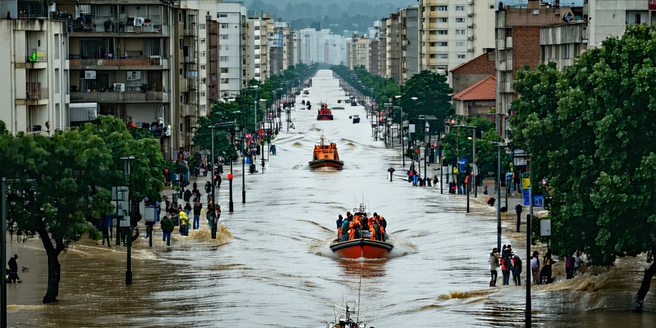
Understanding the Importance of Accurate Flood Data
Accurate flood data is crucial in mitigating the potential impacts of flooding. Communities rely on precise data to plan for emergency responses and resource allocation. Inadequate data can lead to insufficient preparation and increased damages, highlighting the importance of robust data collection processes. Decision-makers use this data to design flood prevention structures and improve flood resilience. Furthermore, reliable flood data is essential for insurance industries in calculating risk premiums and aiding economic recovery. By understanding flood patterns, regional authorities can anticipate future challenges and implement proactive measures. Ultimately, accurate flood data serves as the foundation for developing comprehensive flood management strategies that protect lives, minimize economic losses, and enhance community resilience. Therefore, investing in reliable data collection infrastructures is vital for sustainable flood risk management.
Traditional Methods of Flood Data Collection
Traditional flood data collection techniques have long relied on manual measurement and observation. These methods include measuring water levels using staff gauges and collecting qualitative data from local communities. Historical flood patterns have been documented through eyewitness accounts and governmental records. Rainfall measurements from manual gauges have also been a primary source of flood-related data. Although effective in the past, these methods often involve time-consuming processes and are limited by human error and availability of personnel on-site. Manual techniques can lack real-time data capabilities, impacting response times during flood emergencies. Nevertheless, traditional techniques provide essential baseline data and historical perspectives that aid in understanding and predicting flood behavior. However, the evolution of technology presents more efficient alternatives to enhance the robustness and accuracy of flood data collection, challenging traditional methods to adapt or be augmented by advanced technologies.
Technological Advancements in Flood Monitoring
Technology has significantly advanced flood monitoring capabilities, providing more accurate and timely data. Remote sensing technologies, such as satellites and drones, offer real-time imagery and video, enabling rapid assessment of flood extents. Internet of Things (IoT) devices, including smart sensors and automated gauges, gather continuous data on water levels, rainfall intensity, and weather conditions. This capacity for real-time monitoring supports immediate decision-making during flood events. Geographic Information Systems (GIS) analyze spatial data, delivering insights into vulnerable regions and helping forecast flood impact. Advanced data analytics, combined with artificial intelligence (AI), process vast datasets to identify patterns and predict flood occurrences, enhancing early warning systems. These technologies empower communities to better anticipate and respond to flood threats, paving the way for more resilient flood management strategies.
Challenges in Flood Data Collection and Management
Flood data collection and management face numerous challenges that impact the quality and reliability of information. In many regions, there is a lack of standardized protocols and infrastructure for systematic data collection. Disparities in technology access and funding further exacerbate this issue. Additionally, natural environmental changes and extreme weather conditions can disrupt monitoring equipment and data transmission. Data security and privacy concerns arise with increased digital data collection. Ensuring data accuracy as well as seamless integration from various sources remains a significant hurdle. Moreover, interpreting complex datasets requires skilled personnel, which may not be available in all regions. Addressing these challenges necessitates collaborative efforts between governments, technology providers, and research institutions to develop scalable, resilient solutions to improve flood data collection and management.
Future Trends in Flood Data Analysis
The future of flood data analysis is shaped by technology and innovation, focusing on predictive modeling and comprehensive data integration. Artificial intelligence (AI) and machine learning are set to revolutionize how flood data is processed and interpreted, uncovering patterns and predicting flood events with higher accuracy. The integration of diverse data sources, including social media feeds and community reports, will contribute to a more holistic understanding of flood dynamics. Cloud computing offers scalable storage and real-time analysis capabilities, enhancing data accessibility and collaboration among stakeholders. Additionally, developments in sensor technology and mobile applications will facilitate widespread data collection and dissemination. These emerging trends point towards more proactive, data-driven flood management strategies capable of adapting to changing environmental conditions and minimizing flood risks effectively.
